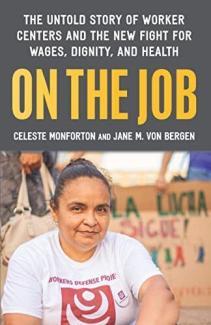19 Jul 2023
Winning Rights: The Role of Worker Centers in Protecting the Most Vulnerable Workers
By Marcy Goldstein-Gelb, MS, and Luz S. Marin, ScD
ABOUT THE AUTHORS: Marcy Goldstein-Gelb is co-executive director of the National Council for Occupational Safety and Health (National COSH), Somerville, MA. Luz S. Marin is an associate professor in the Department of Safety Sciences, Indiana University of Pennsylvania, Indiana, PA.
On the Job: The Untold Story of Worker Centers and the New Fight for Wages, Dignity, and Health
By Celeste Monforton and Jane M. Von Bergen
New York, NY: The New Press
2021 Hardcover
288 pp
$26.99
ISBN: 978-1-62097-501-5
For millions of workers in America, simply trying to earn a living means enduring dangerous working conditions, underpayment of wages, or harassment on a daily basis. Workers with the fewest job options—because of immigration status, education, and systemic racism—often are subjected to the harshest work conditions and have the most to lose if they speak up. Exercising workers’ rights, including receiving fair compensation for the work done or having a safe and healthy working environment, is not the norm for a large portion of workers in the United States. Even worse, some workers, such as domestic workers, have been excluded from coverage by labor laws. In great need of a safe space to address poor conditions, workers are increasingly turning to community-based organizations known as worker centers.
Celeste Monforton and Jane M. VonBergen’s book,On the Job: The UntoldStory of Worker Centers and the New Fight for Wages, Dignity, and Health, captures the story of workers fed up with toiling in dangerous jobs for paltry pay and of being forced to choose between their health and well-being or putting food on their table. It tells the story of a workforce not protected by a union collective bargaining agreement but able to assert its collective power through a growing part of the labor movement: worker centers. Worker centers began to emerge in the late 1970s and early1980s, led by Black worker activists in North Carolina and South Carolina and immigrant activists in New York City and along the Texas–Mexico border. As of late 2021 they had grown to number over 246, funded by a combination of foundations, government, earned income, grassroots fundraising, and dues.
Divided into seven insightful sections, the book discusses the role of worker centers as safe places for workers who have been exploited, abused and harassed, and robbed of their wages and dignity. They also describe the process of educating them about their rights and building power through collective action.
